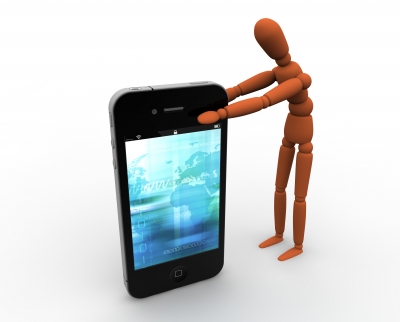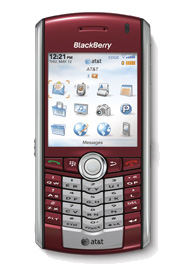-
- 18
Apr - (0)
What’s Meaningful Use Mean to Me (Pt 3)?
The practical implications for professionals and consumers of meeting Meaningful Use measures with the Electronic Health Record (EHR) can be quite positive. I commented on the first ten of the fifteen measures in the last couple posts, and we’ll explore the balance today.

The measures are intended as a way for the Center for Medicare and Medicaid Services (CMS) to confirm that the EHR is being well-used. Computerizing mental health and substance abuse treatment organizations with software that works also needs to fit into the plan for a national health record with the goal of improving health for all Americans. From a national perspective, communication among healthcare professionals, improving efficiency, effectiveness and increasing outcomes data for research are good results of the effort for a national health record that started so long ago. It’s also important to protect consumers’ privacy; today’s plan for that is pretty effective.
Incentives from Medicaid are over $63,000 per prescriber, reason enough for some professionals’ organizations to seek them.
Here are a few tidbits about practical value of meeting the Meaningful Use measures in your EHR.
11. Clinical Decision Support Rule: This sounds tougher than it is, and the value is simple. For example, if, during an intake, a prospective consumer shares he is suicidal, then it’s a requirement to administer a suicide assessment. If the assessment scores in the danger zone, the treatment organization may set a policy (automated in the EHR) to pay some additional attention to that in the form of increased services. Periodic scores from the same assessment could be output to a report that gauges improvement of the condition. This tracks effectiveness of the rule, which pays off greatly for professionals and consumers alike. If the clinical decisions are not leading to better outcomes, that’s brought to the forefront of attention, and whatever’s not working can be improved.
12. Electronic Copy of Health Information: A few hospitals and mental health treatment agencies have integrated a Consumer Portal into their EHR. This delivers a consumer the information via a secure Internet connection. The major concern is complying with HIPAA security requirements and keeping a consumer’s health information from leaking to others. The portals are designed to securely deliver information like blood or urine test results, problem and medication lists, even medication allergies to the consumer…it’s the consumer’s treatment record, and she’s entitled to it. Naturally, not all treatment organizations will want to maintain a Consumer Portal, and those organizations can elect to provide electronic media to the consumer within three days of the request.
13. Clinical Summaries: Did you ever leave a professional’s office wondering what just happened, and if the money for the treatment was well spent? Clinical Summaries are a written description of what happened in that session’s treatment, whether medications were prescribed, a counseling session occurred, or other service offered by the healthcare professional. The information can be available on the Consumer Portal, however other electronic formats or even a printed copy are acceptable under this measure. Whether or not the money is well spent, you’ll at least know what just went on, and since the information is yours, it’s supposed to be part of the service and not charged.
14. Electronic Exchange of Clinical Information: This is one of my favorite parts of the electronic approach. I abhor filling out duplicate information. It always bugs me when I have to repeat the same information within an organization that’s supposed to be serving me…This measure assures that certain information can be shared not only within an organization, but also among healthcare providers. The consumer controls this sharing of data, and if she doesn’t want certain information shared, it’s supposed to be excluded. A good outcome of this is reduced mistakes, eliminating human keystrokes on the computer and electronic updating of information automatically when a consumer visits a new professional.
15. Protect Electronic Health Information: Consumers deserve privacy, and that’s the outcome of this measure. It’s the consumer’s decision to share information…or not. HIPAA security has been pretty effective and around a while, so this sort of protection is not a reach.
Meaningful Use measures assure EHRs meet standards. From what I’ve seen, the standards are reasonable and carry true benefits for both the consumer and the professional.
Beyond these measures, the next subtopic in this line of thought for me to cover is the Menu Set Measures…but that’s another day.
Read more → - 18
-
- 12
Apr - (0)
What’s Meaningful Use Mean to Me (Pt 2)?
In my last message, the first five measures that provide critical proof of using an Electronic Health Record (EHR) were explored from a different angle, the practical implications for professionals and consumers. There are fifteen of these measures, and we’ll tackle a few more today.

Incentives from Medicaid are over $63,000 per prescriber, and that contributes greatly to offsetting purchase price and ongoing expense of the EHR. Mental Health clinics and Substance Abuse Treatment organizations were left out of the original definition of who could qualify for Meaningful Use incentives, and the solution to that oversight is to use prescribers to qualify, at least for now. Checking the progress of the bill that’s intended to add these healthcare providers to the equation, it’s rocketing through House of Representative committees at the speed of government…a tedious process that requires a lot of lobbying to keep it on the radar.
Here are a few tidbits about measures six through ten:
6. Medication Allergy List: The functionality for this relates back measure 2, Drug Interactions and Allergy Checks. In order for an alert to pop up on the CPOE (Computerized Physician Order Entry), it has to come from somewhere in the software, usually another list (doctors seem to like lists). As with other related measures, professionals and consumers really like avoiding an interaction or allergic symptoms invading a consumer’s day because of an interaction with the medication. Additionally, I remember somewhere in the dim past that medication / allergy interactions can occasionally be fatal. It’s lifesaving technology, and the professionals’ inputting a consumer’s allergies is a fairly simple matter. In most software. Some products I have seen have been more work than it’s worth to use. If you’re shopping for an EHR, check the CPOE out thoroughly to assure it’s easy for the prescribers to use.
7. Record Demographics: Who is this consumer? Where does he live? When was he born? Addressing these questions is a no-brainer; professionals need to know who they’re working with. It’s a pretty inoffensive process to gather the required demographics, and they’re needed in order to bill, and consumers are used to this delay. It goes with the territory, so the software needs to work within the professionals’ process to be effective.
8. Record Vital Signs: Blood pressure, and Body Mass Index (BMI) help the professional recognize and monitor conditions like a weight problem. In Mental Health, it’s probably a casual notation to most professionals, however to the consumer, something like that BMI can be an indication of a body-image problem, and a professional may want to discuss this sort of thing.
9. Record Smoking Status: If the consumer is twelve years old, don’t worry about recording this. For those of us over age 13, however this is a terribly important notation. I have heart disease…how much of that condition was aggravated by my smoking, even though I quit over 17 years ago? I have a pal battling bladder cancer every day; his doctors say that’s a direct result of smoking. OK. That’s enough of me on my soap box. The fact is that smoking is an addiction, and that’s of concern to professionals in this business.
10. Clinical Quality Measures: Is treatment working? In my mind, this is one of the most important things we can do in this field because peoples’ lives improve when treatment is successful. There are a ton of assessments intended to measure treatment outcomes. They’re pretty painless, using radio buttons and check boxes to speed the process and enable improvement tracking on a report. Many of these assessments are intended to be administered multiple times, providing a graph of progress toward a treatment goal. In our field, suicide and other assessments deliver measurements of outcomes. In other areas of healthcare, there are different measurements. (http://www.cms.gov/QualityMeasures/03_ElectronicSpecifications.asp#TopOfPage)
If you’re a professional who wants to take advantage of Meaningful Use incentives, remember that your EHR needs to be certified. A couple of companies have been identified as approved in this effort by the government. (http://www.ihealthbeat.org/features/2010/onc-names-temporary-certification-bodies-for-meaningful-use-program.aspx) Not all EHR vendors have sought and received certification, and usually professionals and the organizations they work for are relying on these vendors to secure certification of their software…so ask them if you don’t know and want to collect Meaningful Use incentives.
I’ll share my take on the final five measures in the very near future.
Read more → - 12
-
- 04
Apr - (0)
What’s Meaningful Use Mean to Me (Pt 1)?
In the Electronic Health Record (EHR) business, we have been pointing professionals and the organizations they work for in the direction of collecting incentives from Medicaid for proving they are effectively using the her. Mental health and substance abuse treatment agencies stand to collect good money for meeting Meaningful Use requirements (over $63,000 per prescriber meeting the requirements).

So what? What’s that mean, how can it be good for the consumer and the professional helping them?
There are fifteen “core measures” to be proven in meeting the requirements and collect the incentive payments. Tackling the first few of them, here’s how they affect both the consumer and the professional. Since the biggest payoff for agencies seeking these incentives appears to be in Medicaid, we’re assuming 30% of a prescriber’s work serves Medicaid patients, and they write over 100 prescriptions in the reporting period.
1. CPOE for Medication Orders: That would be Computerized Physician Order Entry. A prescriber just having the capability to maintain records on the computer keeps a ton of treatment information easily accessible. If a medication’s not working, the record helps prescribers determine whether a dose increase, perhaps another drug, or some other measure will be more helpful. From the consumer’s side, CPOE not only shortens their visit and helps zero in on good medications for their conditions, it also sets the stage to send the prescription to their neighborhood pharmacy, a later requirement that eliminates the need to call in or drop off a prescription and delay picking up the medication they need.
2. Drug Interaction and Allergy Checks: One of the greatest features this functionality delivers is a safety net for prescribing. Alerts are built into most CPOE systems to avoid prescribing multiple medications that interact poorly with one another or might aggravate an allergy, which carries the possibility of undesirable side effects like sickness or death. Both professional and consumer like this idea. After all, prescribers are only human, and oversights or mistakes can be made. These alerts help avoid such problems.
3. Maintain a Problem List: If a professional doesn’t have immediate, up to date information regarding all of a patient’s diagnoses, she doesn’t know what to treat. This hampers development of a treatment plan. If a consumer has a diagnosis of alcoholism and a diagnosis of depression, different treatments apply for the multiple problems, goals and objectives in the treatment plan; conditions can aggravate one another. Past diagnosis’ can recur, so noting a previously resolved issue on the problem list can help a professional make good treatment decisions. Consumers deserve well informed treatment for their problems. If a problem list is intrusive, in the professional’s face, there’s a much higher likelihood of staying focused on treatment goals that are agreed upon between the professional and the consumer.
4. Electronic Prescribing: This is the actual delivery of a prescription to the neighborhood pharmacy mentioned above. This feature lowers liability for professionals because the handwriting problem is eliminated…the right dose of the right medication is assured to be legible with electronic prescribing. This is vital to the continued health of the consumer, and pharmacies like the idea because it decreases time they spend on the phone verifying illegible prescriptions.
5. Active Medication List: Similar to the problem list (professionals seem to have a lot of lists), this list provides an immediate update for a professional of not only the consumer’s current status, but the history…if a medication has been effective or ineffective in the past, it may help, hurt or be a waste of time in the future. A consumer may not remember medications that he’s used in the past, or get the name of a medication wrong that he thought worked well for him (take a look at a list of medication names and you can see it could be easy to make a mistake. The medication list provides an accurate record.
If you’re a professional who wants to take advantage of Meaningful Use incentives, the link cited above delivers the hoops you’ll have to jump through immediately. As far as the EHR goes, check out a few of my previous posts for some valuable tips.
I’ll explain a few more of these elements of a good Electronic Health Record (EHR) in the very near future.
Read more → - 04
-
- 08
Mar - (0)
SmartPhone Security and Mental Health Confidentiality
Perhaps I have been proven wrong…
Recently I looked into SmartPhones in medical use, and commented that I felt the applications were not ready for prime time due in part to questionable security (passwords and a secure connection). If it was my mental health data being broadcast across the planet, I’d want to be sure that the distance between the server and the SmartPhone being used by the professional helping me was a secure connection, and my confidential healthcare data would not be intercepted by somebody else.

Well, the proof arrived from Andrew Isham, the director of development for A-CHESS. That’s the SmartPhone app being developed for treatment facilities by the University of Wisconsin. Data coming from and going to the fileserver, whether it’s from a workstation with a secure network, internet connection or SmartPhone, is forced to a login page that sets up the VeriSign security certificate, assuring data encryption. VeriSign is an old hand at this sort of work. I’m not a real tech nurd, however I am pretty tech-savvy, and the explanation satisfied me that the security concern I mentioned in conjunction with SmartPhone connections is no cause for anxiety attacks. All is well. Breathe.
I heard on the radio (one of the wonderful news programs on National Public Radio (NPR) that SmartPhone app development is the fastest growing segment for jobs in the tech industry and looked into it. It turns out that it’s so popular that the traditionally required experience and education is being ignored in the search for people to do this sort of work for software companies. It’s a big deal. My marketing and sales background tells me that even though we’ve seen this sector grow with leaps and bounds lately, we are at the tip of the iceberg.
The question of how appropriate EHR products are to deploy on the SmartPhone and other hand-held devices has come to my attention for a number of years. At least 20% of the organizations I’ve talked with over the past 5 years have a professional on staff who asks about this technology. A friend of mine who runs a mental health and addictions treatment oversight agency has been so serious about using hand-held devices for EHR purposes he developed his own application for this purpose years ago. He was ahead of his time, and I’m certain he’s happy to see this trend.
As I implied above, a commercially viable SmartPhone product needs to synchronize with an agency’s EHR housed on a server. That way the data is available to others treating the consumer, provided the consumer has signed off a Release of Information for them to see the treatment documentation. ACHESS is the product closest to deployment I’ve seen, and most professionals in this business are not likely to develop their own apps like my friend mentioned above. I predict a well-researched app for SmartPhones could be a small part of an enterprise EHR system that will make or break system sales to new agencies very soon. Now that I know security is not a problem, I’m eager to see how they work in scheduling appointments and collaborative development of assessments, treatment planning and progress notes with consumers.
Let me know if you see any mental health and addictions treatment EHR’s that have this sort of functionality working for professionals and consumers in the field. I, for one, am very happy to see some movement in this direction; and my interest was prompted by the silliest thing: learning to send text messages to my kids on my SmartPhone.
Read more → - 08
-
- 08
Mar - (0)
Negotiations…
How much does it cost?
We have a tendency to move in that direction when we first start investigating a purchase. Unfortunately, the cost of a thing doesn’t necessarily tell us anything about its value. So, whether I’m buying an egg or an Electronic Health Record (EHR), I need to divert my thinking from cost to what I get out of it. I have to watch my cholesterol, so I watch the eggs, and when I help agencies buy EHR’s, I look for comparative benefits to the consumer and professional.

There are tons of books out there on negotiating (just Google it), and if you’re making a large purchase, from a car to an EHR, and it’s not a bad idea to know a salesperson’s perspective before going into negotiations. I found Roger Dawson’s book an easy read and illuminating for that purpose.
The EHR purchase affects both consumers & professionals because the facility always needs to purchase more outside services & schedule training, f/u with all staff to assure they’re using system and using it right in order to get the value out of the system.
The consumer feels the effects of an EHR when service is disrupted due to lack of training, or because a form that’s supposed to speed an intake doesn’t work right and it just takes too much time to finish the paperwork…or worse, a problem leaves the consumer in the waiting room, without the help he’s asking for. These troubles can usually be avoided during implementation if the agency is wise in not cutting corners on services to implement the system. Earned wisdom includes hiring or assigning a full-time, experienced internal person to tend to agency business and assure the consumer experience is not disrupted.
The real negotiating point for the price software is the license. Most companies that sell software are manufacturers, so the cost of the building the software has been reconciled by selling enough system licenses to pay for that cost. If this is not the case, you may want to re-think the company you are working with from the angle of experience and that earned wisdom I mentioned above.
In this sector a ton of companies manufacturing EHRs (84 good ones started in my last search process for a customer). Many were born at a mental health facility as a home-grown system. They’re probably fine, provided the company has spun off from the original agency. If a company can’t stand on its own two feet and keeps going back to the mother company to meet payroll, they may not be around long. It really makes people grouchy when their helpful software people just disappear one day. Agencies buying software need to be conscious of this.
Impelementation services like importing existing data into the new system, configuration, training and fine tuning are really no place to cut corners. It always seems staff needs more help, and when they can’t get it because the facility didn’t pay for it, they get can get grouchy. In addition to the original problem of making the software work right, consumers feel this, simply because the EHR is part of their treatment experience. When a consumer needs help, the last thing he wants to run into is resistance due to software or user problems when somebody has offered to help them in the first place; It’s a no-win situation. A good negotiating point is to plan to add optional services, they will likely be needed.
An agency also needs to pay attention to things like the HITECH Act the software support reputation (call a bundle of references, not just their preferred customers), and their internal experts available to successfully implement the software.
My jaded and self-interested advice is to hire a professional. A good consultant can counsel the entire staff, bottom to top on how to get a product that proves to be a good value: An EHR that improves the consumer experience, satisfies documentation requirements, improves the quality of the agency and doesn’t make people grouchy and defeat the purpose of mental health improvement.
Read more → - 08
-
- 25
Feb - (0)
What happened to Innovation?
I like new gizmos. I think most of us do, evidenced by the rocketing success of the Apples’ iPod, iPhone, and iPad.

These American products are taking over the world. Unfortunately, in medical technology, the trend is putting us behind the worldwide curve for the availability of innovative and exciting medical gizmos and medical technology in general. Price Waterhouse Cooper says this is a product of good, old-fashioned capitalism. American companies are seeking worldwide for medical solutions that can be marketed quickly and effectively. The fear of releasing products that are not approved by a government agency makes it hard for companies to market medical technologies.
Naturally, we’ll get the goodies eventually, and American professionals can be the last ones to get new technology, so American consumers could be the last to benefit from innovative gizmos and technology. It seems the increasing wealth in emerging nations and Europe is enabling these markets to pay the freight for the cool stuff.
Why is this so?
It’s simple, really. There’s a long history of medical technology being released in this country with negative effects, Medications like Ephedra (a base chemical for crystal methamphetamine, or speed) and Avandia for treating diabetes have their troubles, and Americans are frightened. Medication side effects, X-Ray or other electronic emission exposure, and gizmos manufactured and marketed with flaws have led to government intervention and a hyper-vigilant attitude toward medical innovation. This leads to more testing and a slower release curve, which looses time that can instead be spent marketing the product in other countries. Evidently, the rest of the world is not as careful (fearful?) of things going wrong as Americans are.
Combine this with the idea that the rest of the world is getting rich enough to afford new medical technology, and it’s easy to understand why the rest of the world is getting access to gizmos and medications before us.
In mental health and addictions, gizmos may be less of a factor than with other health concerns, like deteriorated knees that can now be replaced with artificials, however consumers can still benefit from technology, mostly in the area of diagnosis, like with brain scans.
It’s hard to tell what other technology can benefit mental health and addictions treatment when we aren’t clairvoyant, and still, it’s on the way. I guess the point of this meandering discussion is that as Americans, if we’re seeking a new solution to our mental health or addiction problems, technology may be on the way, however, in order to use it, we may need to take a European vacation. Provided we could overcome the fear of side effects and make the bold move to seek offshore solutions, the manufacturer of the gizmo would be happy, and we might end up with improved mental health.
This brings another factor to light…will insurance cover solutions a consumer seeks outside the United States, like use of a gizmo to bombard some brain malfunction that leads to depression or anxiety with newly discovered, healing electronic emissions? I bet they’d want to wait till the item was approved by the government for use in the United States (by the way, I made up this example).
If you’re intrigued about the prospect of an offshore solution to a mental health problem, keep your eyes open and keep surfing the web for new, innovative technology that’s becoming available elsewhere in the world. It’s a good idea to know what we’re getting into when we make bold moves, so check with your insurance company to understand who’s paying the bill, and understand possible side effects of any new treatment.
Read more → - 25
-
- 22
Feb - (0)
SmartPhones In Addiction Treatment
I hope I have been proven wrong…
Recently I looked into SmartPhones in medical use, and commented that I felt the applications were not ready for prime time, and that I hoped that somebody could prove me wrong as to the reason why: security. If it was me, I’d want effective security that my communications over the SmartPhone were going to the person I directed them to, and would not be intercepted by somebody else.

Well, the proof hasn’t come to me yet, and I must share that it may be on the way in the form of ACHESS a SmartPhone app for alcoholism and addiction treatment. A study is under way for ACHESS that will test its features from “panic buttons” to GPS locators helping consumers get peer and professional support when they are experiencing cravings or have wandered into the wrong place to stay clean and sober.
ACHESS, or Addiction CHESS, is being tested in the field right now, and we’ll know the outcome in a few months.
I like the ideas that form the foundation of the app and how it’s used.
- • When a consumer feels a craving to use, or her sobriety is jeopardized, hit the “panic button” in the app and you can be connected to somebody who can help overcome that craving
- • If a consumer has a tendency to drift into “old playpens” to connect with “old playmates” and abandon sobriety, the GPS tracking can help peers or professionals offer relapse intervention, simply because they know the habits of the consumer and locations of past usage of alcohol and substances
- • When somebody new to sobriety doesn’t know what “tool” to use (phone call, breathing, mindfulness, prayer, etc), the consumer can consult the app for an effective way to overcome dangers to sobriety
- • An approach to presenting tools tailored to the consumer instead of a “one size fits all” can improve the effectiveness of the treatment and encourage consumers to make choices for sobriety
Still, I wonder about security. I reviewed the ACHESS web site, discovering that current iterations of the product are primarily for the home computer, for which SSL and a few quite good security solutions like Citrix are about as effective as you’re going to get. The problem with the SmartPhone is that it’s wireless, and if your messages go out into the ether without some sort of scrambling called encryption, there is a high likelihood they could be intercepted. Addiction treatment has long been concerned with protecting the identity and treatment records of consumers in treatment, and that’s not about to change.
I looked, I called, and I Emailed, and still have no answer to this concern…then again, the test is just beginning, and the answer to that question is forthcoming.
…more to come.
Read more → - 22
-
- 14
Feb - (0)
Memory
Can you imagine remembering all the details of fifty cases?
In depth conversations, screening scores and results of a plethora of assessments bring an incredible amount of information into the mix for a single consumer, and in some treatment environments, mental health and addictions professionals can be responsible for the health of fifty consumers. Keeping the details straight seems like an impossible task, which is one reason charts were invented in the first place, and these days, one of the greatest reasons why the Electronic Health Record (EHR) is invaluable in the treatment world.

Thomas Insel, director of the National Institute of Mental Health tackled Memory in a recent blog, and the first thing that came to my mind was how computers store data and assist in decision-making. This study of human memory indicated there is a period of time where memories are fragile and begin to break down…computer data doesn’t do that. Once you have it stored, you can retrieve it in that condition any old time you want it. Still, I wouldn’t say the computer’s memory is better than a professional’s (some days, perhaps it’s more accurate).
A computer saves a series of on-off switches onto its hard drive without intuition attached, without feelings associated. I begin to question the type of record that is saved. A simple suicide assessment can be a record of seven to a dozen questions or so, with answers that can be scored…something like “yes” = “1”, “maybe” = “2” and “no” = “3”. Write down the answers and add up the scores, and poof! You have a scorable assessment, and if you string a few iterations of this type of instrument completed over a period of time, you have an “outcomes study”. The next question becomes “How reliable is this?”
If a patient knows he will be admitted to a facility, and is tired of living in a ward, he may elect to be less than truthful when answering the questions, indicating everything is fine, just fine…when it really isn’t. If the consumer is accustomed to this sort of assessment, he could be sent home because the answers to the assessment indicate he doesn’t need help. The judgment of the seasoned professional increases in value, and relying on a short assessment like this becomes questionable. Naturally, this doesn’t mean the technology is meaningless or valueless, just that it’s a tool, and the trained professional makes the decisions for treatment.
Based on a discussion with a patient while filling out an assessment, professionals may want to look into matters a little more deeply…other tools are at their disposal, including audio and video recording of filling out the assessment, which should be a collaboration between the consumer and the professional.
Most EHRs have the ability to attach electronic files to a patient’s record, like an MP3 video recording of a session. This sort of technology can be revealing as a study of non-verbal communication, and the drawback is that it’s cumbersome…once you record a session, the exact spot to be studied needs to be accessed, and locating it could take a while. The up-side to this idea is that it may be more reliable than human memory. According to Insel’s research, when memories are retrieved, they can be changed, decreasing their reliability. An assessment’s answers or a recording won’t change. They are what they are.
Not long ago, this sort of technology required a substantial investment and a lot of equipment. My Notebook cost $400 and came with a camera that records audio/video in formats that are readable on most PCs.
The idea of recording sessions is an old one. Perhaps it’s time to re-visit some ideas about the EHR like attaching electronically recorded treatment sessions to the consumer’s record. Reviewing records like this could prove to be a lifesaver.
Read more → - 14
-
- 26
Jan - (0)
Text–Nology
I admit it. I text. Almost everybody does these days.
Texting on your Smartphone is not a far cry from a professional in a behavioral health hospital or outpatient addiction treatment center keeping notes or other treatment documentation on the device. In fact, companies like New Mexico Software are developing medical record solutions for these devices at a record pace. I thought I’d investigate products that have been sold to professionals, are effectively being used and proven in the field.

I prefer the thumb-driven phone keyboard as opposed to the touch screen, probably because I’m used to it, and don’t want to get used to the new device. I’ve actually improved to the point that I can write a pretty detailed Email with fair speed. This gives me hope that using the small-screen environment to do real work is not just a pipe dream. Somewhere, it’s already happening, I’m sure professionals are writing their notes on their devices and somehow getting the note transferred from their phone to the Electronic Health Record (EHR) resident on the server of the agency they work for.
This prompts me to immediate suspicion…consumer confidentiality is a huge issue in our business, and I asked myself if HIPAA rules were being broken with this technology strategy? HIPAA is a rule that protects privacy of health information and is enforced by the US Office for Civil Rights.
I became quite frustrated looking into possible SmartPhone solutions, I found nothing conclusive. I ran across so many open ended arguments about the iPhone and iPad’s HIPAA security compliance, I decided to concentrate on the one I use, the BlackBerry. I ran across a fair source for the basics in the HIPAA Compliance Journal. Since Email is the foundation of electronic data transfer in the mobile environment, it seems a logical place to start exploring to determine whether the Smartphone is a secure enough device on which to keep or share consumer information. First of all, there may be no way to assure outgoing Email from a BlackBerry will remain secure, especially if it is forwarded to other treatment team members or to the consumer. Consumer information that’s quoted in Email is probably breaking HIPAA rules. This means the IT staff needs to be very savvy in order to assure the information makes it to the EHR without having to pass through public air space in an unsecured state if this technology is to be used.
The simplest thing to do is assure the entire Blackberry mobile network is set up in a secure fashion, to avoid insecure transmissions of data. This is just a matter of configuring the Blackberry with the Secure IMAP selection.
So, you say, that’s Email…what about documents like progress notes written on the Smartphone?
In a general sense, many mental health EHR software manufacturers offer mobile solutions. These are usually a service available on the Internet instead of software that’s installed on a mobile device, and come with secure methods of access. Using the software could be as simple for the user as launching an Internet browser on a Smartphone. The problem comes in with real estate. The Smartphone’s screen is too small for most professionals to find the environment effective to do any real work in the program.
Unless there is an App, a special, small program that installs on the Smartphone to deliver a screen that’s limited enough to perform a practical task like writing a note. I’m not aware of companies who have this capability up and running as part of their product, and would really like review the feature/functionality. Companies like New Mexico Software (above) are working on that.
So, if a mental health or addiction treatment professional wants this capability, it may come down either waiting for technology to catch up, or selling the idea to the folks they work for to develop it, simply because it falls into the bucket of software out there that’s “not ready for prime time” Hope somebody proves me wrong.
Oh, and about texting patient information? Make sure you have a secure environment that meets the HIPAA rule if you’re doing this.
Read more → - 26
-
- 23
Jan - (0)
Epidemic Treatment
Addiction to opiates is in epidemic proportions in many areas of the country. In Suffolk County, NY, it’s become so high-profile that the county launched an opiate epidemic advisory council seeking community help. Folks from all over the county have offered energy to help the community recover from this societal disease.

There are a number of methods of treatment, including 12 step groups, psychotherapy, hospitalization, and methadone, buprenorphine or suboxone for people requiring ongoing medication to overcome opiate abuse. I have worked with many methadone clinics over the years, and was happy to see that a number of clinics are working to improve their businesses…with the projected increases in people who need treatment, this improvement is vital.
According to NIATX, a group that helps mental health and addiction treatment organizations with their businesses, efforts have been successful in helping methadone clinics increase their capabilities to serve more people with opiate addiction problems. I was also glad to see that the solutions to making more widespread treatment available are served and improved by the Electronic Health Record (EHR).
Referrals Who knows who’s having trouble with opiates and is having difficulty recovering better than people in methadone treatment? Rewards were offered to consumers when they brought new folks needing help through the door. The program was effective enough to increase admissions at one agency by 53%. That sort of growth could create a minor problem: How do we track who brought whom through the door, and the rewards owed or delivered? A simple referral module in the EHR does the trick. After the fact, built in report writers can help evaluate long-term retention in treatment for people involved in this referral program…and save a lot of man-hours that might have been spent counting beans. Manual tracking of programs like this is seldom analyzed to determine effectiveness just because people are busy with their regular jobs and view analysis as busywork. Using computers to do that job makes sense.
Therapy Group In a number of states, Medicaid has switched to charging for each service delivered as opposed to a traditional method of a single fee that includes all counseling, medication or other services when a consumer walks through the door. Clinics are finding they need to offer different and separate types of treatment services, including group treatment. Groups require a two part note documenting both group focus and consumer focus, as well as scheduling to create a roster…a roster in the EHR saves time, increases accuracy of attendance and billing accounting. The note assures the team will know of emergent issues for consumers and assures they get more individual help if needed…not to mention fulfilling billing requirements. Another benefit of the EHR in this instance is the focus of the group; analyzing group notes can point out needs for therapy groups that focus on different topics.
Immediate Service The EHR can help manage inquiries by people needing help, including a quick scheduling for the consumer to talk with a counselor. The disease of addiction can make people rather impatient, so the quicker the service, the better. Central scheduling enables scheduling of appointments in the next empty time slot that works for both the consumer and a counselor. Without that up-to-the minute management capability, connecting the two can be difficult.
With opiate addiction in epidemic proportions, it only makes sense to help professionals deliver the highest quality care to the most people. Optimizing use of the EHR is a vital tool in serving more people in your neighborhood who might have a problem with medications like oxycontin or Vicodin, or street drugs like heroin.
Read more → - 23
